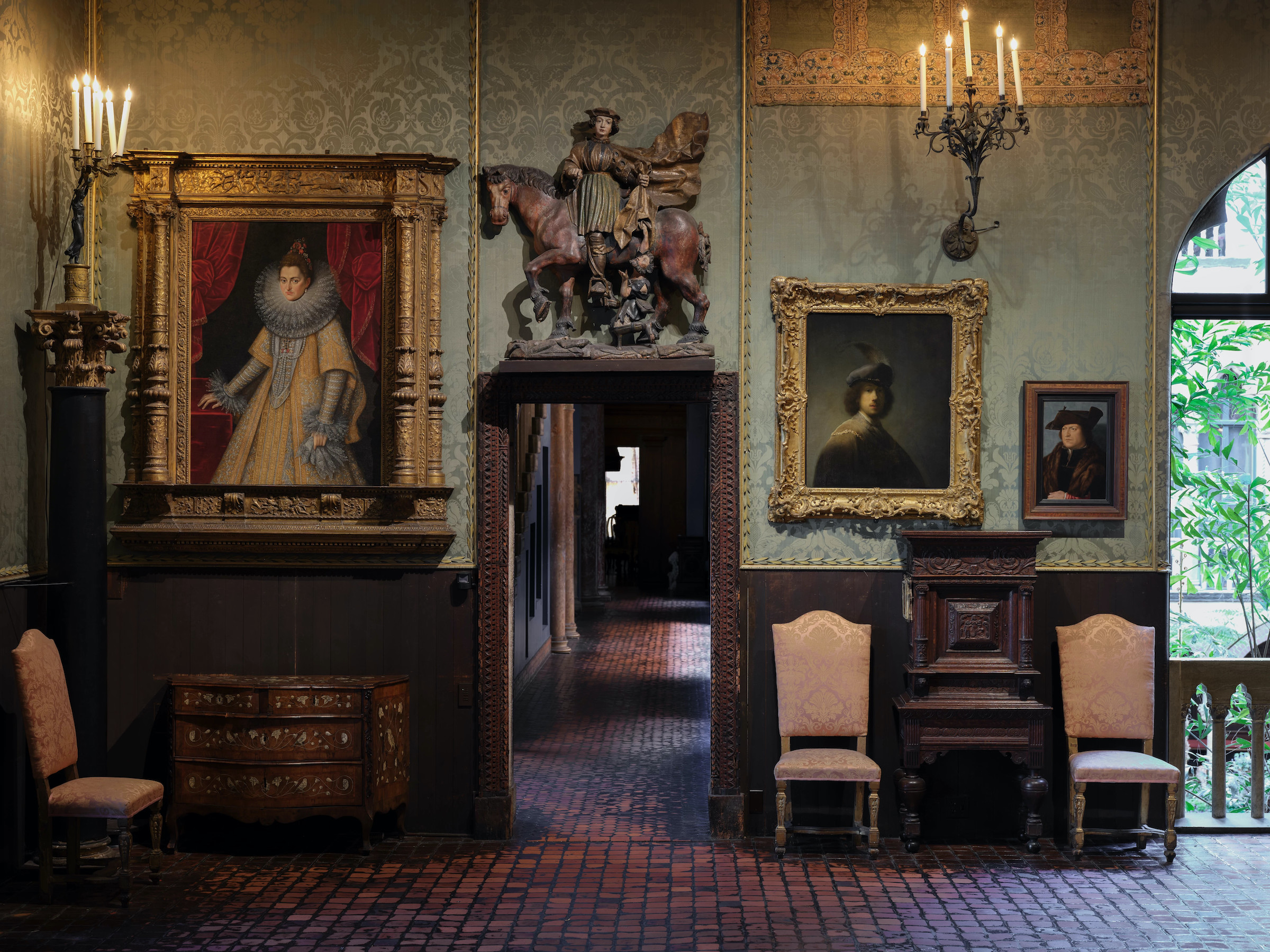More than 30 years ago, thieves pulled off the single largest property heist in history at Boston’s Isabella Stewart Gardner Museum. Of the 13 works stolen in the early hours of March 18, 1990, six were taken from the second-floor Dutch Room, including paintings by Johannes Vermeer and Rembrandt; their empty frames still hang on the gallery’s walls to this day, waiting for the missing artworks to return.
Now, the Dutch Room is getting a much-needed makeover that will completely renovate the space from floor to ceiling over the next two and a half years, including artwork, furniture, and architectural elements. Slated to be completed by early 2027, it is the museum’s final major room restoration, following its revamping of the third-floor Titian Room.
Director of Conservation Holly Salmon told Hyperallergic that the $1.25 million project is supported by a gift from an anonymous donor.

“For much of the project, we will be taking pieces off view and bringing them to our lab for conservators to treat,” Salmon added, explaining that works need to be periodically cycled out because the gallery will remain open during the renovation. In their absence, staff will provide visitors with informational text explaining the repair work happening behind the scenes.
“Visitors will be able to get a lot of information at any moment in the next two and a half years,” Salmon said, noting that some artworks have already been treated and returned to their original displays, while two empty frames, a couple of chairs, several candlesticks, and two sculptures are currently off view in the conservation lab.


The room’s intricately painted wooden ceiling is the biggest collection object that will be treated during the project. Dating back to 1500, it consists of 15 panels that will need to be separated into individual pieces during the conservation process, Salmon said. An even lengthier endeavor will be to reproduce the textiles that used to adorn the gallery’s walls based on historic photographs and fragments of the original silk upholstery held in storage.
The most time-consuming task, however, will likely be the final stage of the project, which will deconstruct the room “down to the studs.” Taking place in the second half of 2026, this phase will involve stripping the walls and floor before installing new upholstery and the restored collection. Through it all, visitors will still be able to move around the room and gain insight into the renovation work.
“We’ve found that visitors are really engaged with these processes, even if the collection is not visible for a short time period,” Salmon said.
Unlike the restoration of the Titian Room, which was interrupted by the COVID-19 pandemic, Salmon added that she does not anticipate any delays in this project.
In addition to the comprehensive restoration work, the renovation will also involve continued research into the museum’s collections and scientific analysis of several of the Dutch Room’s paintings, including one of Rembrandt’s earliest self-portraits.




